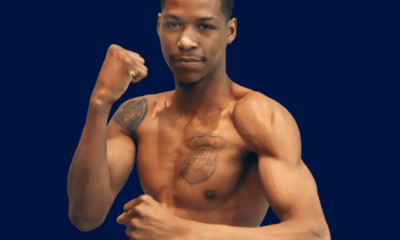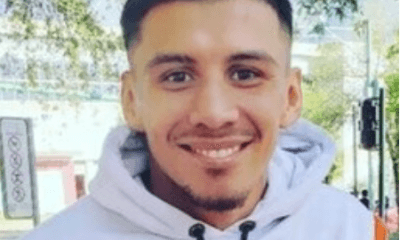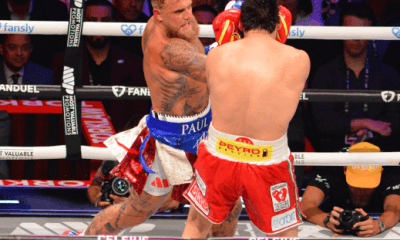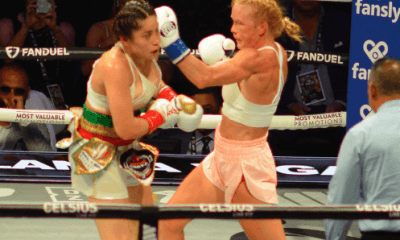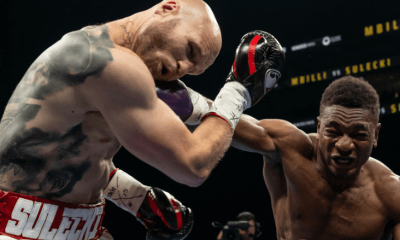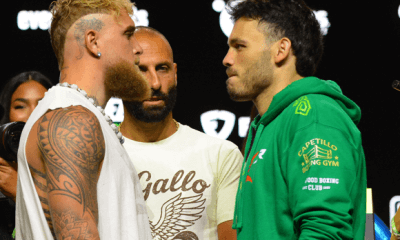Featured Articles
Three Punch Combo: The York Hall Tournament, Luis Nery Deconstructed and More
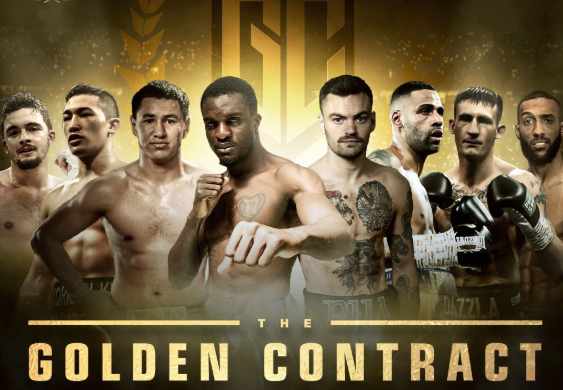
Three Punch Combo: The York Hall Tournament, Luis Nery Deconstructed and More
The eyes of the boxing world will be on Las Vegas this week for the rematch between Deontay Wilder (41-0-1, 40 KO’s) and Luis Ortiz (31-1, 26 KO’s). But as with most weeks in the sport, there is plenty of other action taking place that will be widely available on various platforms.
One such event is the Golden Contract tournament that will take place on Friday at York Hall in London and broadcast in the United States on ESPN+. An eight-man, single elimination tournament in three weight divisions, the tournament was organized by boxing management company MTK Global in association with Matchroom.
This particular quarterfinal on Friday features fighters in the 140-pound division. There are also tournaments in the featherweight and light heavyweight divisions. The featherweight quarterfinals kicked off last month and the light heavyweight quarterfinals will take place in December.
The semifinals for each weight division are expected to take place early next year with the finals being planned for some time around the middle of the year.
The “golden ticket” for the winner of each weight division is a five-fight two-year deal that guarantees six figure paydays along with global exposure.
As of this writing, none of the eight fighters in action Friday knows who they will be facing. The draw will take place later this week. Each fighter will pull a ball out of a bag containing four red balls and four blue balls. The fighters who select the blue colored balls will select their opponents from the fighters who pulled the red colored balls. The blue colored balls will be numbered one to four with the fighter selecting number one picking first.
The best way I would describe the field for this tournament is that it is a step up in quality from the recent Boxcino tournaments but a clear step down from the quality of fighters in the WBSS. Basically, we have some up-and-coming fighters participating along with a mix of veterans who are looking to get back into contention.
Some notable participants in the 140-pound division are young undefeated fighters Darren Surtees (12-0, 8 KO’s) and Logan Yoon (16-0, 12 KO’s). Also, Ohara Davies (19-2, 14 KO’s), Tyrone McKenna (19-1-1, 6 KO’s) and Mohamed Mimoune (21-3, 2 KO’s) are scheduled to be in the field.
I love tournaments and am very much looking forward to this event. Based on the field, we are going to see some very compelling fights, either on Friday or down the road as the tournament progresses.
Under The Radar Fight
It is going to be a busy day of boxing on ESPN+ on Friday. In addition to the aforementioned Golden Contract tournament, ESPN+ will be broadcasting a card from Dubai that is headlined by a very intriguing 140-pound crossroads fight between Jack Catterall (24-0, 13 KO’s) and Timo Schwarzkopf (20-3, 12 KO’s).
Catterall, 26, is a fighter that just oozes talent. Fighting from the southpaw stance, he likes to press forward aggressively behind the right jab. Once in range, he likes to fire off fluid heavy handed combinations to the head and body of his opponent. He is also excellent at using his feet to create angles to land his combinations with precision accuracy.
With all the natural talent Catterall showcased coming up the ladder, the expectations got to be very lofty. However, a pair of performances last year caused those expectations to become a little tempered.
In June, Catterall struggled to navigate range against a tall southpaw in Tyrone McKenna and was fortunate to eke out a close 10-round unanimous decision. Later in October, Catterall stepped in against Ohara Davies. Many expected a breakout performance from Catterall. Instead, fans were presented with][ 12 rounds of listless action in a fight that may have seen more clinches than punches landed. In the end, although Catterall got the nod on the scorecards, his stock took a major hit.
After a stay-busy knockout win against sub.-500 fighter Oscar Amador this past April, Catterall looks to get his career back on track against Schwarzkopf.
Schwarzkopf, 28, is a tough gritty aggressive fighter with proven durability. While he may not have the most talent, he has certainly made the most of all his abilities. Schwarzkopf likes to press forward working behind the left jab from the orthodox stance. He is not afraid to throw all sorts of punches behind that jab, often times loading up looking to land one big punch. True to his nature, he is also not afraid to eat some leather pressing forward while looking for his own opportunities to land clean punches.
There is a lot to like about this fight in my opinion. Catterall is motivated to make a statement coming off two high profile lackluster performances last year. He is going to try to be the first to stop Schwarzkopf.
Given that Catterall is naturally aggressive and may be even more so in this fight, I think that gives Schwarzkopf opportunities to land some shots. Schwarzkopf will not be afraid to stand his ground and exchange. It is his nature.
The best fights are not always the most high-profile fights. Yes, the attention of the boxing world will be in mostly other places this weekend but Catterall-Schwarzkopf could be the fight that steals the show.
Should Luis Nery Be On Upset Alert?
I really like the Wilder-Ortiz II undercard, especially the bantamweight contest between Luis Nery (30-0, 24 KO’s) and Emmanuel Rodriguez (19-1, 12 KO’s). And though most sportsbooks have Rodriguez a solid underdog, I think his chances of springing an upset are quite good.
A big part of the reason why most oddsmakers are so down on Rodriguez is that he was knocked out in his last fight. But Rodriguez wasn’t knocked out by just any fighter. He was knocked out by Naoya Inoue who is not only considered to be one of boxing’s top pound for pound fighters but also may be boxing’s top pound for pound puncher.
I think too many people are judging Rodriguez based off that loss. Before that fight, Rodriguez had proven to be a very capable fighter, good enough to capture a world title belt.
Rodriguez, 27, is just entering the prime of his career. He is a boxer-puncher by trade who likes to work behind a well-schooled left jab from the orthodox stance. Naturally very athletic, Rodriguez will work fast handed, fluid combinations behind that jab. He is also very technically sound which should not be all that surprising given his multitude of accomplishments as an amateur.
I know a lot of people in boxing are very high on Luis Nery but I see a lot of flaws in his game that I believe will one day be exposed. Nery falls in love too much with his power and often forgets how to properly set up those power shots. This was very evident in his last fight against Juan Carlos Payano.
Nery, 24, also lacks focus on defense. He does not move his head and often stands in front of his opponent after throwing his power shot with his hands down admiring his work.
I see this as the perfect storm for an upset. An athletic and technically sound fighter like Rodriguez can expose the flaws of a one-dimensional fighter like Nery. We have seen it happen plenty of times throughout boxing history and I for one will be betting on it happening again this weekend.
Check out more boxing news on video at The Boxing Channel
To comment on this story in The Fight Forum CLICK HERE
-

 Featured Articles3 weeks ago
Featured Articles3 weeks agoAvila Perspective, Chap. 330: Matchroom in New York plus the Latest on Canelo-Crawford
-

 Featured Articles2 weeks ago
Featured Articles2 weeks agoVito Mielnicki Jr Whitewashes Kamil Gardzielik Before the Home Folks in Newark
-

 Featured Articles4 weeks ago
Featured Articles4 weeks agoAvila Perspective, Chap 329: Pacquiao is Back, Fabio in England and More
-

 Featured Articles3 weeks ago
Featured Articles3 weeks agoOpetaia and Nakatani Crush Overmatched Foes, Capping Off a Wild Boxing Weekend
-

 Featured Articles2 weeks ago
Featured Articles2 weeks agoCatching Up with Clay Moyle Who Talks About His Massive Collection of Boxing Books
-

 Featured Articles4 weeks ago
Featured Articles4 weeks agoFabio Wardley Comes from Behind to KO Justis Huni
-

 Featured Articles1 week ago
Featured Articles1 week agoMore Medals for Hawaii’s Patricio Family at the USA Boxing Summer Festival
-
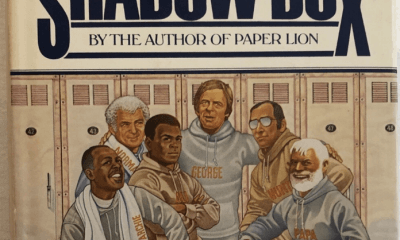
 Featured Articles4 weeks ago
Featured Articles4 weeks agoDelving into ‘Hoopla’ with Notes on Books by George Plimpton and Joyce Carol Oates

